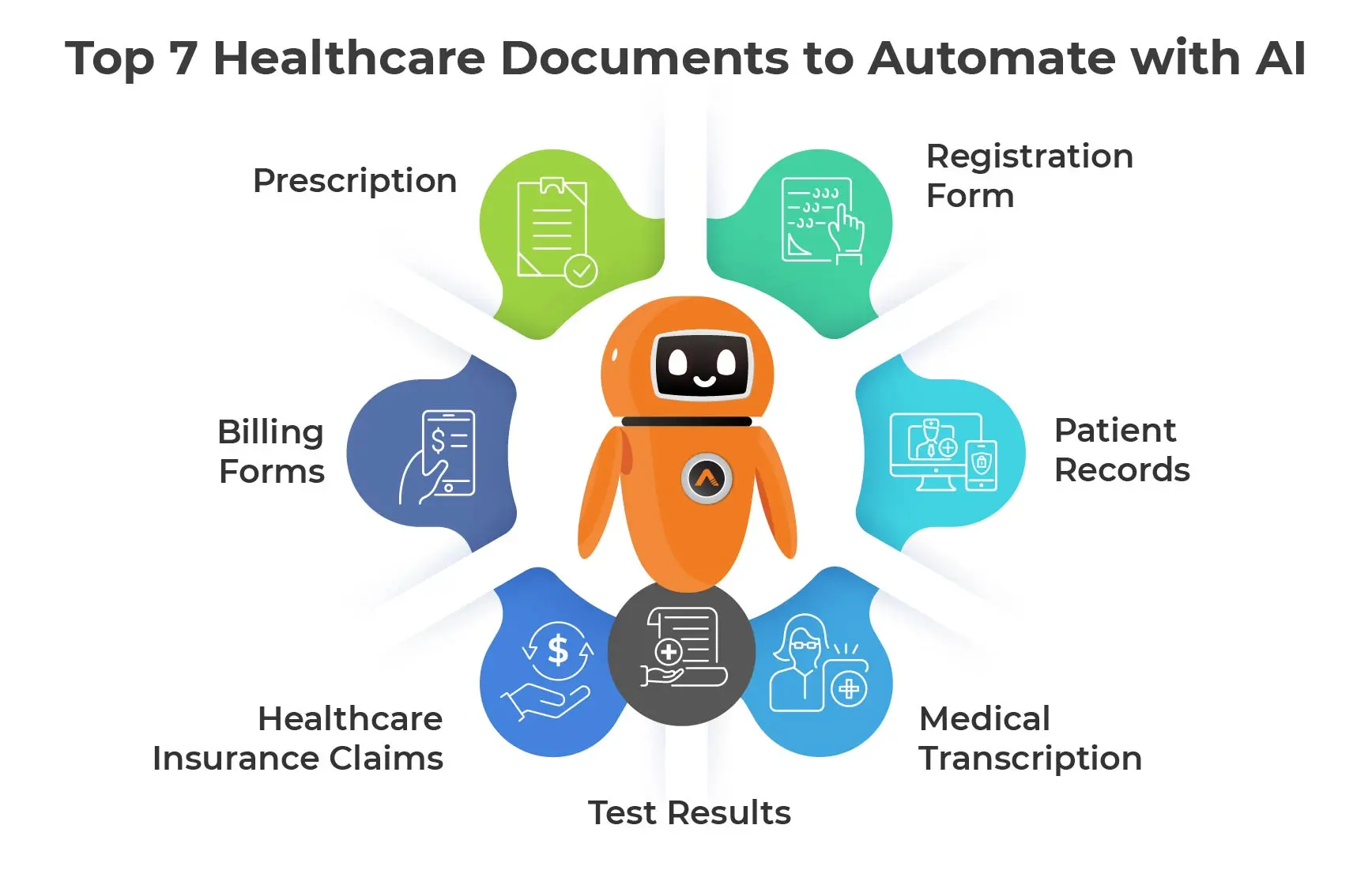In the healthcare industry, every second counts. Whether managing patient records, initiating healthcare insurance claims, or scheduling appointments, administrative tasks can overshadow the primary goal of offering value-added patient care. What if there was a way to alleviate the administrative task of data management and give healthcare providers enough time to focus on patient care? Healthcare document automation is emerging as a valuable solution to healthcare data interoperability challenges.
The Challenge of Moving Data, Not Documents
In the healthcare sector, the central challenge lies not in mere document transfer between systems but in meaningful and efficient data movement. Forms are omnipresent in healthcare operations, particularly within healthcare providers, where every patient service entails submitting billing claims.
Healthcare providers need to fill an average of 20,000 forms every year.
These forms are fundamental to the healthcare ecosystem, often standardized and approved by organizations like the American Medical Association (AMA). However, manual filling remains prevalent despite standardization, leading to extensive paperwork. The sheer volume of forms in healthcare is immense and varies depending on the services provided. Thus, healthcare providers must adopt healthcare document automation to create better data interoperability.
Document automation in healthcare involves using intelligent document processing and AI capabilities to extract, analyze and process data seamlessly with minimal human efforts.
Digitizing Top Healthcare Documents to Simplify Data Processing
The types of healthcare documents to automate using automation and AI technologies are-

-
Registration Form
AI algorithms can analyze patient demographics and extract patient data from pre-populated forms to speed up registration. Healthcare providers can also integrate the registration data with insurance providers to automatically verify insurance eligibility.
-
Patient Records
Managing patient records is complex, especially in extensive healthcare facilities. AI-enabled electronic health record (EHR) management can automatically extract data from doctors’ notes, prescriptions, and test results and create a centralized repository for easy access. Natural language processing technologies can categorize medical information effortlessly.
-
Medical Transcription
Transcribing dictated medical notes and reports manually is time-consuming and prone to errors. Medical document automation can automatically transcribe these voices into texts. Healthcare providers can also train AI models to learn from feedback and corrections provided by healthcare professionals, improving transcription accuracy over time and adapting to different accents and speech patterns.
-
Billing Forms
Healthcare document automation solutions can analyze patient data and diagnoses to automatically assign the correct medical codes for billing, reducing errors and delays. Medical document automation can validate the extracted data against predefined rules and criteria to ensure accuracy and completeness. This helps identify errors or discrepancies in the billing information and flag them for further review or correction.
-
Healthcare Insurance Claims
Processing healthcare insurance claims manually leads to reimbursement delays. Healthcare insurance document automation can automate claims processing by verifying patient eligibility, checking for errors, and submitting claims electronically. AI bots can also analyze historical claims data to identify trends and patterns, helping insurers make more accurate predictions and improve risk management.
-
Prescription
Document automation in healthcare can assist healthcare providers in generating electronic prescriptions, checking for drug interactions, and ensuring compliance with regulatory guidelines. By analyzing patient data and medical histories, healthcare providers can personalize treatment plans and medication recommendations, improving patient safety and outcomes.
-
Test Results
Automating the processing and analysis of test results using AI can significantly reduce turnaround times and improve patient care. AI algorithms can interpret diagnostic tests such as medical imaging scans or laboratory tests, assisting healthcare professionals in diagnosing conditions accurately and efficiently.
Way Forward
Adopting healthcare document automation enables healthcare providers to address all the data interoperability challenges and focus on driving value-added patient care. In future healthcare, document automation will involve advancements like telemedicine integration, predictive analytics, and large language learning models like Generative AI to simplify data interoperability.
As we stand on the cusp of a new era in healthcare, embracing the opportunities that AI and machine learning can improve the efficiency and effectiveness of healthcare delivery. AutomationEdge’s healthcare solution can help make this goal achievable. AutomationEdge healthcare automation includes technologies like intelligent document processing, AI chatbot, ready solution workflow and service desk automation that can simplify healthcare data management.
The post Healthcare Document Automation: Streamlining Data Interoperability appeared first on AutomationEdge.
This is a companion discussion topic for the original entry at https://automationedge.com/blogs/healthcare-document-automation/